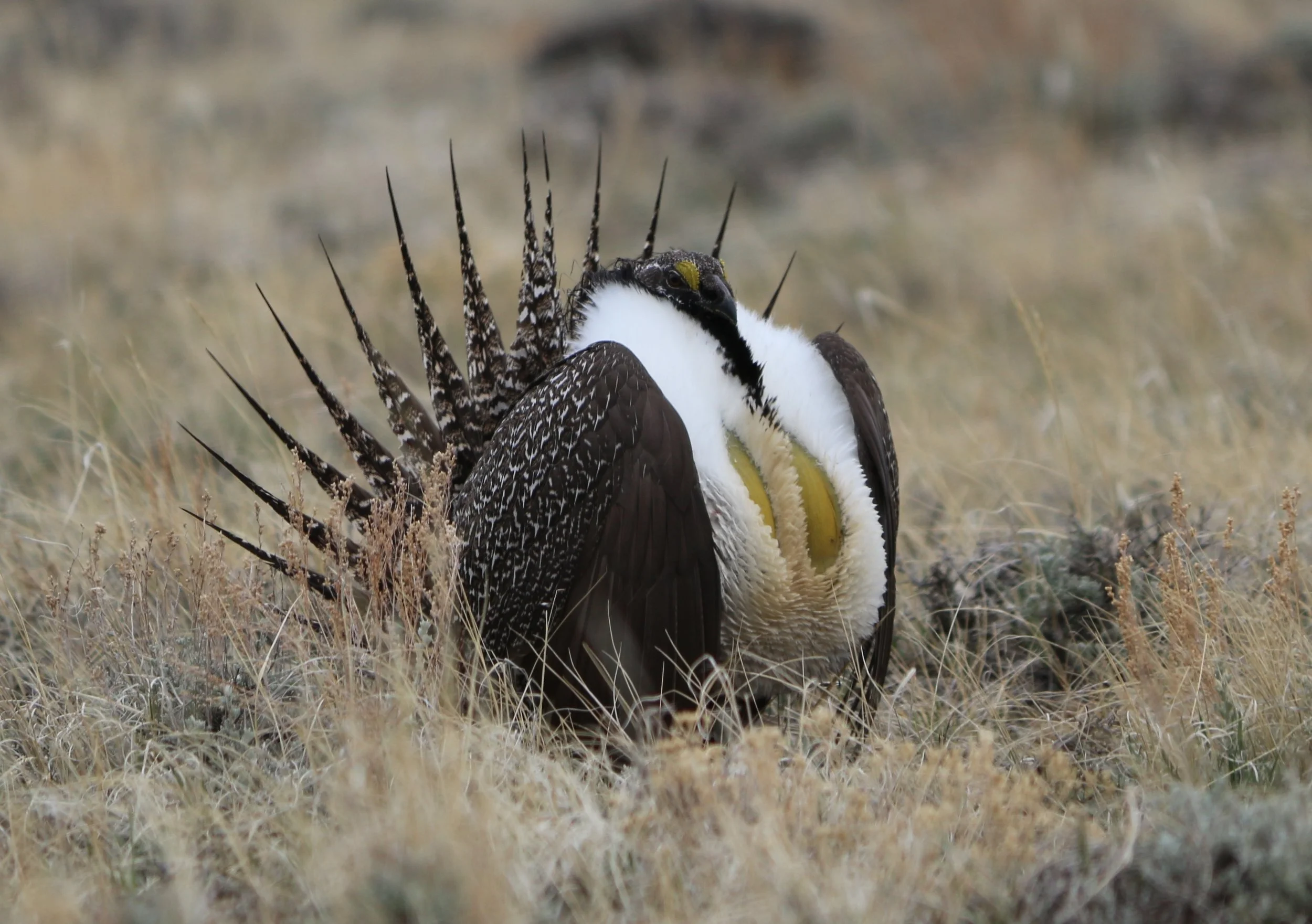Scientific Name: Centrocercus urophasianus
Greater Sage-Grouse population declines in Eastern Oregon in the late 1990’s led to considerable concern as well as greater conservation efforts in the area. The Blue Mountain Land Trust’s work in Eastern Oregon is integral to protecting important habitat for Greater Sage-Grouse.
Identification
Sage-Grouse are found in the sagebrush steppe of the intermountain West. They mostly stay at ground level, browsing on sagebrush and other plants. They can be identified by their small head, long tail, and round body. Although mostly a gray-brown color, they have black bellies.
Life
Greater Sage-Grouse on average live between three and six years. They have specialized stomachs to digest tough sagebrush and place their nests under sagebrush shrubs. During the spring, males perform a mating ritual where they inflate their chests and fan their wings, producing a burbling sound.
Status
Greater Sage-Grouse are only found in sagebrush plains and are incredibly sensitive to disturbances in their habitat. Sagebrush grasslands are abundant in the Western United States but are also one of the most imperiled ecosystems in North America. Human development and relatively low-resistance to fire has led to degraded and fragmented sagebrush habitats. Habitat disturbances led to severe declines in Greater Sage-Grouse populations. In 2015, the U.S. Fish and Wildlife Service determined that successful conservation work meant the Greater Sage-Grouse did not need to be listed as endangered.

